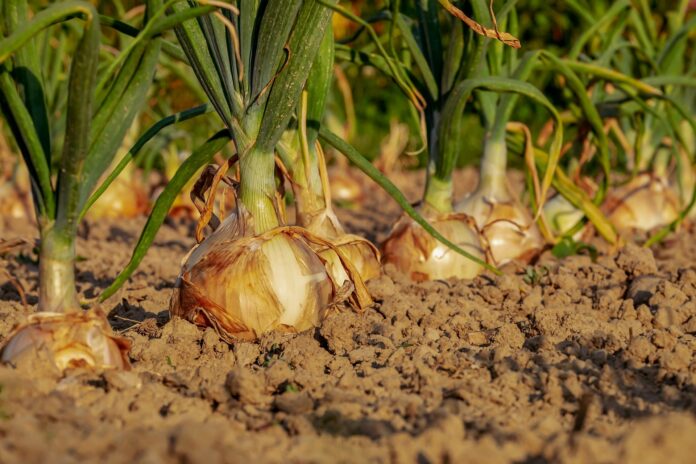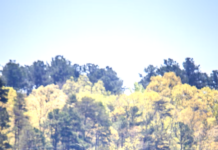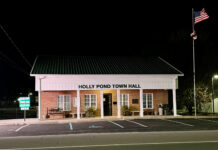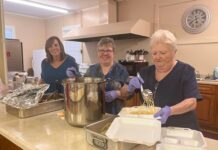CULLMAN, Ala. – With quarantine still underway, some are itching to get outside and some are picking up new hobbies to pass the time. For those interested in starting a vegetable garden, Cullman County Extension Coordinator Tony Glover’s got you covered.
Glover forwarded the Alabama Cooperative Extension System’s publication, ‘The Alabama Vegetable Gardener Handbook Series,’ a 17-part series the Extension has posted here: www.aces.edu/blog/topics/vegetables-lawn-garden/the-alabama-vegetable-gardener/.
For the beginners, we’ll be taking a look at part one: “Planning for the Home Garden.”
Part one covers questions many ask while planning out what to do for their gardens, like location, what to plant, soil management, irrigation and cultivation. Part one also covers insect, weed and disease control.
For the beginning, planning on where to grow, the plan recommends selecting a site with full sun, “You cannot grow vegetables in a competition with trees or in shade. The soil should be well drained and free of harmful chemicals or debris. Improve your garden soil by adding organic matter – compost, leaf mold or well-rotted sawdust – in the late fall.”
For lime and fertilizer needs, the guide says a soil test is the only way to determine lime and fertilizer needs.
Glover added, “We do suggest folks have their soil tested by Auburn’s soil lab. The test cost $7 and gives us a lot of information on liming needs and fertilizer requirements. They can email me at cullmancounty@auburn.edu or call my cell at 205-568-0005 for help with that process.”
After preparing everything, when it comes time for planting, the guide recommends if transplanting plants to use stocky, healthy and fresh plants. Be sure to set them at the same level they originally grew in the pot. Water transplants to settle soil around roots and if growing tall tomatoes, set tall tomato plants deeper than they grew originally.
The guide says for choosing seeds and how to plant: “Seed are inexpensive; get the best available. Don’t seed too thickly. Plant small seed, such as turnips and carrots, about ¼ to ½ inch deep. Plant larger seed, such as beans and cucumbers, about 1 inch deep.”
Glover said choosing on transplants and seeds, “Some things are easier and better to start as transplants such as tomatoes, peppers and eggplants. Most other things are easy to start from seed, and buying plants is not needed but may give you a little head start on pests.”
For weed control, the guide recommends to cultivate frequently, but shallowly. On chemicals, the guide says, “Chemical weed killers are not usually recommended for home gardens. Before using, get full information on how to use and what crop to use them on.”
Now that you have your seeds planted, it’s time for watering and irrigation. the guide recommends to soak the garden thoroughly once a week during long dry periods. Frequent light irrigation helps only during seed germination. Be wary of overhead irrigation, especially during late in the afternoon, as it can spread certain diseases. If you still water with overhead irrigation, the guide recommends to do so earlier in the day so plants dry before night. The guide notes to really consider drip irrigation.
On disease control, the guide says, “The best practices are rotation, clean seed, resistant varieties (when available), early planting, plowing under old crop debris, and seed treatment. Chemical fungicides, such as chlorothalonil and maneb, may be used to control some common leaf diseases of tomatoes, squash, cucumbers, and cantaloupes. If the garden is heavily infested with nematodes, you might need to move your garden.”
When it comes time to deal with pests and insects, the guide recommends using low-cost insect monitoring traps; the pheromone-based traps “give accurate information about pest activity and season-long monitoring.”
When you identify what’s in the garden, the guide says to “use a three-tiered, integrated pest management (IPM) approach of cultural controls, mechanical barriers, and insecticidal intervention, if needed. Note that all pesticides are poisons and must be used in their prescribed manner to minimize effects to nontarget insects, such as honey bees.”
The guide says, like with weed control, use all chemicals for insects, weeds or nematodes according to directions on their labels. “It tells you the amount to use, the crops to use it on, and the days between application and harvest. The label is one of the most important pieces of garden literature. Read and heed it for effective use and safety.”
When it comes time for harvesting, the guide recommends harvesting often to get vegetables at the proper stage of maturity. “If beans, cucumbers, or okra are left to mature fully, the plant will stop producing. Early-morning harvest is best for most vegetables. Freeze or can the surplus to enjoy your garden all year.”
The Alabama Vegetable Gardener Series offers an Alabama vegetable garden planning chart, which lists all sorts of vegetables and what their spring/fall planting dates are, what seed per 100 ft. row amount you’ll need, what spacing they’ll need and the average crop per 100 ft.
To view the chart, visit www.aces.edu/blog/topics/vegetables-lawn-garden/planning-for-the-home-garden/.
Copyright 2020 Humble Roots, LLC. All Rights Reserved.


























